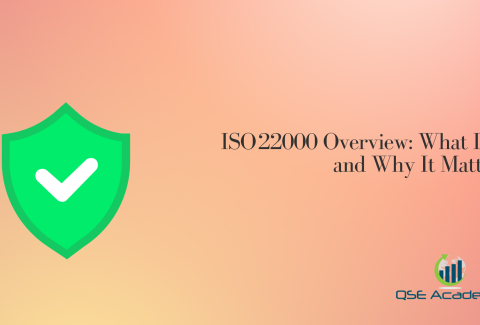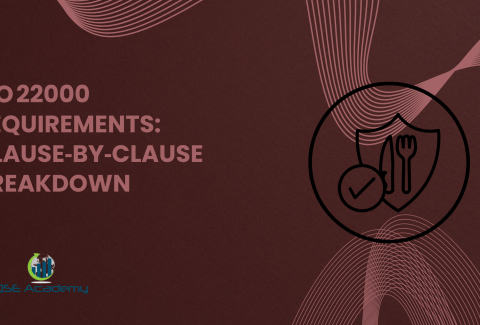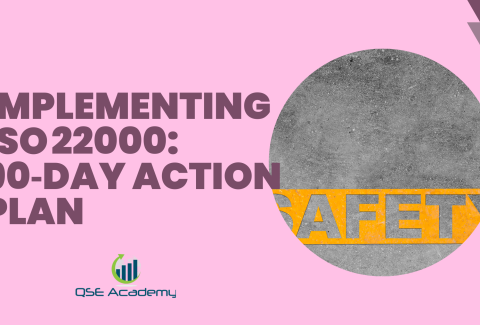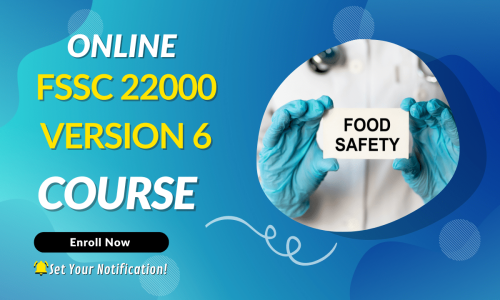How to write a HACCP plan?
Last Updated on July 4, 2025 by Melissa Lazaro
HACCP Plan – In this article, we are going to discuss how to make a HACCP or hazard analysis and critical control points plan.
1. Introduction
HACCP is one of the internationally accepted food safety management systems that are currently widely adopted by many companies in the food industry. HACCP is an integrated system that allows for effective monitoring and control of specified hazards from farm to table. HACCP is a system that focuses on the control of food safety hazards by combining monitoring, verification, and corrective actions. HACCP is a concept, not just a technique or procedure. It is about being proactive and to have an understanding of the food safety risks associated with the process steps in different aspects to include.
HACCP plans also helps us to understand better what we are doing so we can improve our performance.
2. HACCP plan
HACCP plans include the following:
a. Hazard identification and risk assessment
b. Controls
c. Monitoring procedures after implementation of control measures.
d. Verification of the effectiveness of the control measures
e. Corrective action.
f. Records and reports for each step of the process.
g. Training and education, etc.
3. Components of a HACCP plan
Hazard identification is the first step in hazard analysis and critical control point plans. Hazard identification can be described as a scientific process of evaluating the types, causes, and conditions of hazards that might exist in a product, process, or service. A hazard may be described as anything that might cause harm to either humans (food consumers) or animals (food producers). Hazard identification is an important activity because it is the first step in the development of a HACCP plan. Hazard identification is the first step in hazard analysis and critical control point plans and this becomes the basis for dealing with specific significant hazards.
The second step in the process is risk assessment. Risk assessment is about determining whether a certain hazard can cause harm to humans, or animals, and how great that harm will be when it does occur. The more injuries or deaths that have occurred from a particular hazard, the greater we consider it to be a significant risk. This is true for both humans and animals.
One of the things that we look at in risk assessment is the exposure of people, especially children, and pregnant women to potentially toxic chemicals in their diet every day. This is why pregnant women are monitored for the amount of alcohol and drugs they take because we know that some substances can cause harm to the fetus.
The third step in the process is risk analysis which includes the main part of the critical control points (CCPs). Critical control points are an important part of a HACCP plan. They are a list(s) of points that need to be checked frequently in order to determine whether they have become contaminated, polluted, or maybe failing to meet their specifications.
The final step in the process is verification. This involves checking whether the CCPs are at their specified specifications and that they are working as expected. Verification allows us to assess the effectiveness and efficiency of critical control points in food industries.
A useful example of monitoring results showing how a product reached its specification is a “waterfall chart”. A waterfall chart consists of monitoring data plotted on a graph in which a single data point corresponds to one step(s) in the manufacturing process. For each step, you can see how well the measuring device works, if it correctly performs its task, what happens when there is pollution by a chemical over time, etcetera.
4. Final remarks
HACCP plans are used by a lot of companies in many different food industries because the HACCP system allows for effective monitoring and control of specific hazards from farm to table. After all, there is not any similar system in the food industry today. This is why it’s so popular in many companies today. If you are involved in the food industry, I strongly suggest that you use a HACCP plan to stay on top of your business.
Looking for More Resources on ISO 22000?
If you found this article helpful, explore our premium resources designed to help you achieve ISO 22000 certification efficiently:
- Complete Documentation Package for ISO/IEC 22000 2018: Get all the essential templates and documents you need for fast, easy implementation.
- Online Course on ISO/IEC 22000 2018 : Enroll in our comprehensive training to master the key concepts and practical steps toward certification.
- ISO/IEC 22000 2018 Checklist: Download our detailed checklist to ensure you’ve covered every step of the process.
These resources are tailored to meet your needs and ensure a smooth certification journey. Explore them today and get one step closer to success!


















